York and the Jorvik Viking Festival
I skipped by a great deal of Eastern England in order to make it up to York in time for the Jorvik Viking Festival. As I'm sure you noticed when I was talking about Iceland, I have a bit of an obsession with vikings, and so couldn't miss out on a week of events concerning them. Well, actually, I did miss half of it, but many earlier events repeated during the three days I was there. My first night in the city I met up with my couchsurf host, a young woman (and her housemates) attending university in the city, who treated me to pancakes. In the morning I wandered about the city for a while. The most notable landmark was the York Minster, which is home to the Archbishop of York, making it the second most important cathedral in England, and is also its largest. Emperor Constantine sits outside to mark the spot where he declared himself emperor in 306 CE.
As with other Gothic buildings, I loved the grotesques and gargoyles.
My meanderings brought me to Jorvik, the museum about the city's past as the capital of the viking controlled area of what it now England. I didn't have time to wade through the queue, but I took the time to hang out by museum and talk with festival volunteers acting as viking traders. They informed me about combs, swords, and other goods. I then made sure I was on time for the play Egil Skallagrimsson Keeps his Head, which was about the same Icelandic hero and saga I had seen a museum about in Iceland. The play of course focused on the part of the saga that takes place in Jorvik, and was enacted by three actors who played the numerous parts. They struck a nice balance between faithfulness to the text and entertainment. They streamlined the story yet left enough of the odd bits in to make the audience realize that Icelandic sagas do not share the narrative structure we've come to expect, like the parts where the saga says "... and then nothing much happened for then next three years." They played up the humor, which was appreciated, and the humor was magnified by their acting and their creative use of simple sets that could transform from eating halls to raiding longboats, among other locals. The actors and writers managed to ease the audience into understanding that Egil was seen as being manly not only for his berserker strength but also his impressive poetry, which is what saves his head in the end more than his strength of arms.
After the play I went to the historic guild hall, where reenactors from Regia Anglorum demonstrated crafts such as weaving, coinage, and arms and armor.
(The coin minter looked a bit Gandalf-ish.)
Guess where I spent my time? An earl in the Regia Anglorum society patiently explained viking period combat and how it differed from that of the Roman and Medieval periods. Despite the Vikings' fierce reputation, the different groups that fought each other were all pretty barbaric and ruthless. The vikings just had better boats. It was a cool history lesson in how all the peoples of Britain were displaced and replaced: Scots came over from Ireland, Angles and Saxons were pushed out by vikings and ended up in Normandy, and then some of their descendants were part of the invasion force that swept England in 1066. The Regia Anglorum folk also talked about the ridiculous racist graffiti and political movements in recent history of "England for the English", and how meaningless that is if you know your history. The earl recounted hearing a man say that his ancestors were here when the Normans came, to which he replied that if that was the case than the supposed nativist probably had some Roman blood, and the Roman soldiers came from everywhere.
The earl and a very dedicated peasant not only spoke in depth about the history of the viking period of England, they also explained the combat system they use for reenacting battles, which sounds fun. There is a branch in Oregon, and I may take up arms.
That night I went on a ghost tour of York, on the recommendation of the Regia Anglorum staff. I tend to find the whole 'ghost tour' thing pretty hokey, but this one was good. It focused on the history (well, the history of the legends more than actual history), and told it entertainingly, yet without any annoying gimmicks. A city as old as York accumulates some bloody tales over the centuries.
The next morning walked the walls, which were built on the same lines as the original Roman walls. My walk began at England's only extant city wall barbican, which is now a bicycle lane.
The walls pass the ruins of a Roman tower...
...gave great views of the far side of the Minster...
...and shaded a medieval icehouse. More on that later...
The Monk Bar is the best preserved city gate, which even still has a working portcullis.
Inside is a museum dedicated to Richard III, who though hated nearly everywhere else in England was well-liked in the city which stayed loyal to him during the rebellion of Edward IV. Here there is a mock trial over whether or not he really killed the princes in the Tower of London, which is indeed a matter of historical dispute. The first act of Richard III is my favorite act in a Shakespeare play (though I like Hamlet the best as a play overall), so I enjoyed the exhibit despite it being a bit silly and overpriced.
I took a hiatus from the wall walk to visit the York City Art Gallery. (Let this be a lesson, oh intrepid readers. Don't fall a year behind on your blog you will completely forget what was inside the York City Art Gallery [yet oddly remember the layout of the building... what the fuck, brain?].) In the museum gardens are the Multangular tower (with a Roman base and 13th century additions), the ruins of St. Mary's Abbey, and the Abbey gatehall.
I also stopped by the Minster again since it was a clearer day.
At this point in the morning things were beginning to be open, so I went back to the Jorvik interactive museum. Outside the viking merchants were still explaining the life of people in the viking period. Also, make up artists were giving battle scars. It was for children, but I have little in the way of shame when it comes to making a public fool of myself, so I thought I'd get in the reenactment spirit.
I soon forgot that I had this decorating my face, and more so forgot that not everyone in the city would make the connection to the festival. Later in the day several people commented on it, and I made comments along the lines of 'you should see the other guy.' One man quietly asked if I was alright and I acted in character of a viking, and only later realized that he was actually concerned. So, umm... good job makeup artist!
The interactive museum shockingly lived up to its claim to bring history to life. After being strapped into what was basically a really slow amusement park ride, I passed over realistic animatronic villiagers going about their daily lives. As advertised, I experienced the sights and smells of viking era Jorvik, faithfully reconstructed beside the archaeological sites that showed the make up of the houses, the diets of the people, the location of the butchers, etc. The viking town itself displayed at the end of the ride in the actual dig site, which was covered in plexiglass that let us walk over all of the remains and observe the waddle and daub wall up close without damaging the museum pieces. Found artifacts were in display cases above the locations where they were discovered, and interactive displays provided yet more information. One memorable part was on the walk out, where the skeleton of an unfortunate young man was riddled with holes from numerous wounds he took over the course of at least two battles. He was killed several times over, in that the wounds from the first battle would probably have killed him in not too long even if he hadn't been hacked apart in the second one. The guides explained exactly how each wound was delivered, by arrow and axe, and in what order, as well as the diseases that also marred and misshaped his bones. Oh forensic archaeology, you are much more entertaining when separated from the worries and misfortunes of our own times by several centuries.
With a few hours to kill before the next scheduled event, I completing the city wall circuit. I got my first daylight look at the Norman Clifford's Tower, which is all that remains of York Castle:
I really liked the octagonal lantern tower of All Saints, Pavement:
I also stopped by the most visited street in Europe, The Shambles.
The Shambles is a perfect name for a street of buildings that lean out so far over the cobblestone path that they seem to be about to lurch forward, but the name is actually a reference to it being the street of butchers, from the Saxon word Shamel, or slaughterhouse. It gives a feel for what Medieval England may have felt like, especially late at night when it isn't crawling with people.
Next on my itinerary was a presentation on the York Horde, as well as the speaker's other archaeological digs of a viking boat burial in the Orkney islands. The talk was a little dry, but some of the unearthed artifacts were interesting, and it blew my mind how digging up anything anywhere in Britain is an archaeological dig. There is probably more human history under the average British city block than in the entirety of the United States. Okay, that's an exaggeration, but not by as much as you'd think.
The presentation was shown in a room in the York Mansion House, the official residence of York's Lord Mayor. There were historical outfits and silly hats of the Lord Mayor, portraits, and great signs like this one:
Also in the Mansion House was a presentation of viking tales, mostly by elderly immigrants from Scandinavia. I loved the tales of trolls and other mythical beasts, as well as the rather different moral lessons that old Scandinavia taught. The city was quiet when I left, and the Minster still looked stunning.
That night I stayed in the backpacker's hostel, though it really didn't seem like a hostel at all in terms of price or decor. In fact in was a restored historical building. This was the sign on the room where I stayed:
My final day in York began with an investigation of the current archaeological digs in the city.
The site itself doesn't look like much. The ground water has actually helped to preserve artifacts. The volunteer diggers took a bit of time off to explain what they were doing and how. Old homes had been torn down and were being replaced by larger buildings, and archaeologists were given time to excavate before construction begins. There were layers of history, from the turn of the previous century houses down to medieval helms, then viking combs and rubbish pits, then Roman bricks. All of it just sitting in someone's backyard.
Having taken in my fill of the dig, I moved on to the skirmishes in the Museum Gardens This was to be the mustering of Saxon troop as a preview of the main battle between Saxon and Viking to take place that night. I wasn't the only one headed that way:
Watching the skirmishes reinforced my desire to try out some historical reenactment group. It looked fun. I saw my friend the earl leading troops into battle and saw that he was right: swords of Viking period were a great show of wealth but were at a serious tactical disadvantage against a spear with good reach.
Not only the warriors were reenacted. The priests were goading on the troops against the heathen enemies.
The march to the battleground was a bit surreal.
A few hours later in the fields at the (horse) racecourse outside the city walls the crowd gathered for the battle. A viking ship facade had been erected. The story of the battle was that three viking kings had been slain in an earlier battle, and now the Christian forces were attempting to prevent their pagan funeral rites on good Christian soil.
The events didn't really get started until full dark. It began with a fire dance performance. At first I thought that the only thing separating these professional fire dancers from my friends in Reed's Weapons of Mass Distraction was that the pros danced in unison. Later, though the show became more impressive as they incorporated impressive interweaving choreography. Also, their pyrotechnics were a bit more advanced at times.
There were a few more skirmishes enacted, each with a story, and several of which deconstructed our ideas of the Saxon and Viking bloodlust as they stopped to parlay and tried to avoid conflict when they saw they were evenly matched and would probably each take heavy losses. It did strike me as more accurate than the movie image of the fearless warriors, though it wasn't as entertainingly dramatic. They didn't hold back in the final battle, though. I was told that the outcome of battles isn't actually predetermined: the participants follow rules where if they are hit three times they fall down dead, so if one side is more skilled they could turn the tide of battle. I'm sure the organizers stacked things in the Vikings' favor, though, since it would be a shame to build a pyre for the finale and not use it. Thankfully, the forces of awesome prevailed over the forces of goodness, and we got to see the boat burn.
Some of the reenactors came over to talk with the crowd and give photo ops.
York felt like part of history in the late hours of the night, where the smells were more noticeable than the sounds and lights, just like in the Medieval times.
That night I slept out in the ice house doorway that I mentioned above. The shadows hid me from sight, and it offered some wind protection, though it was still February and still bloody cold despite the use of all my hobo tricks. As much as I loved my time in York, that night made it a bit easier to move on when the trains started running in the morning.
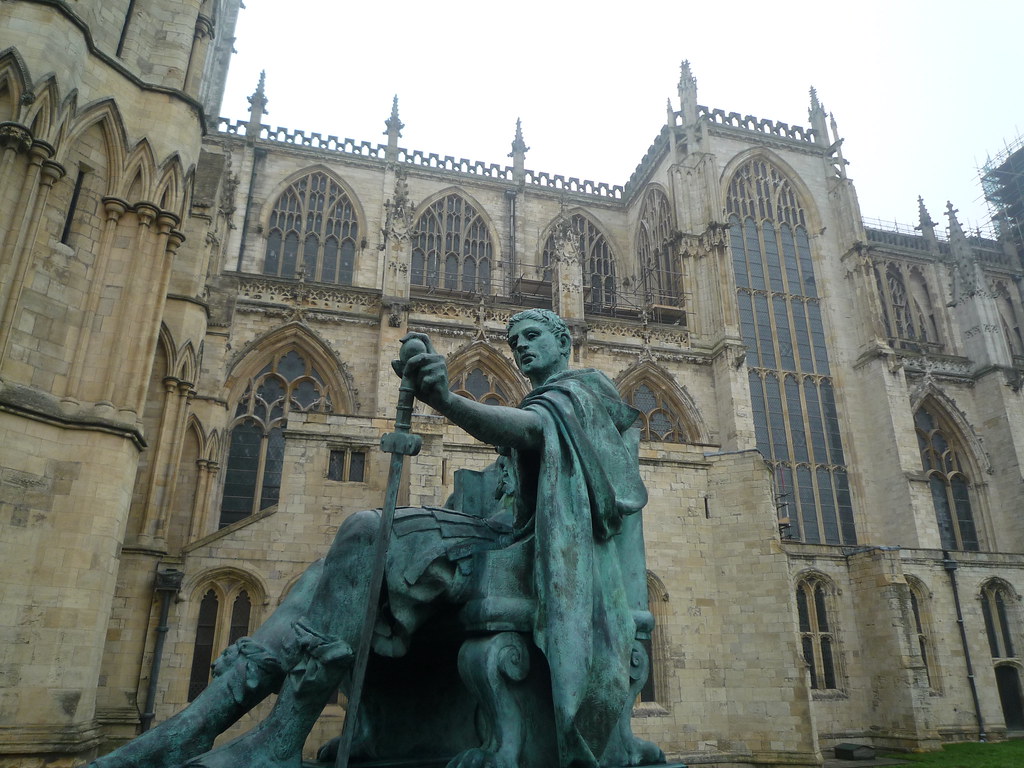
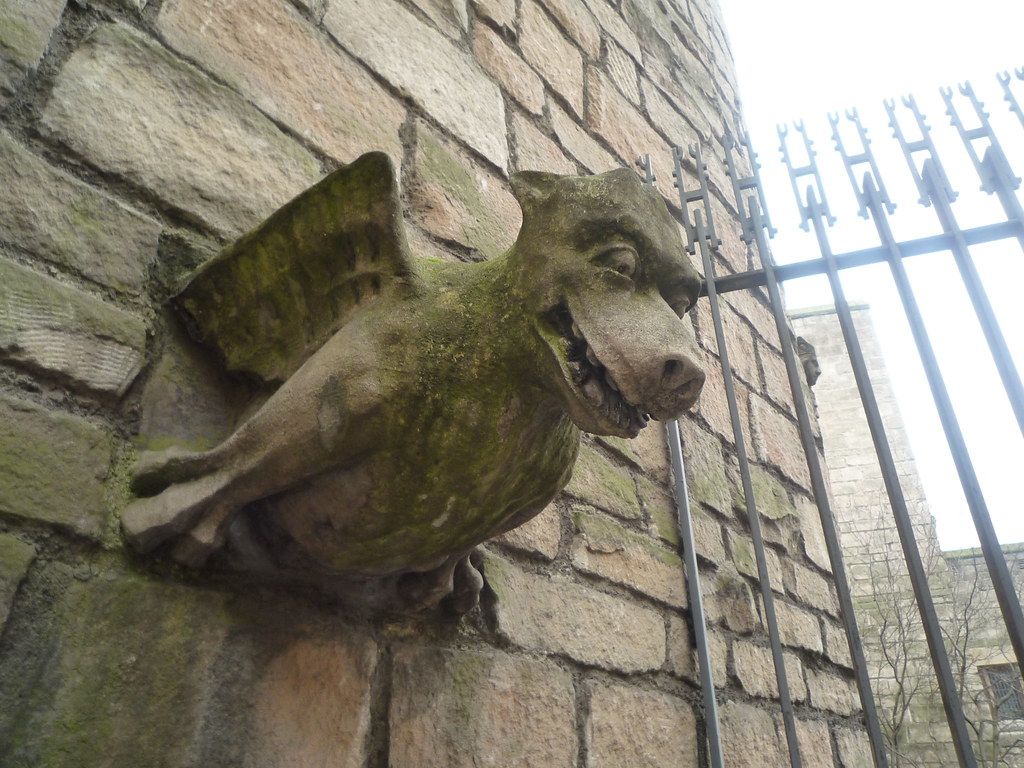
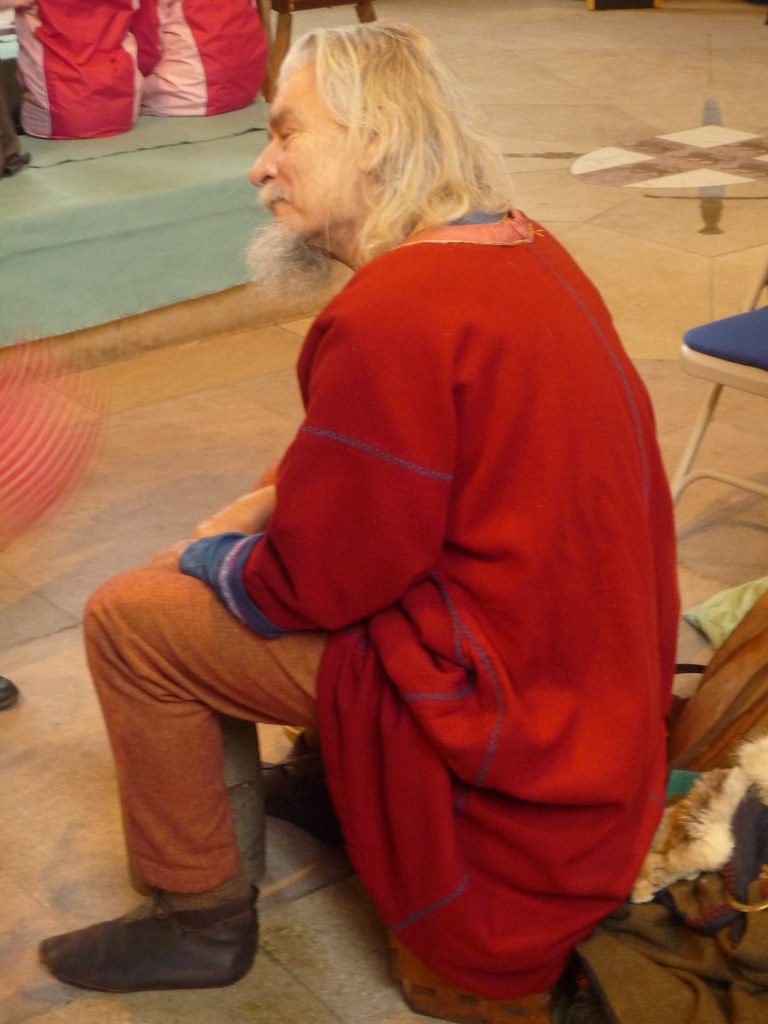
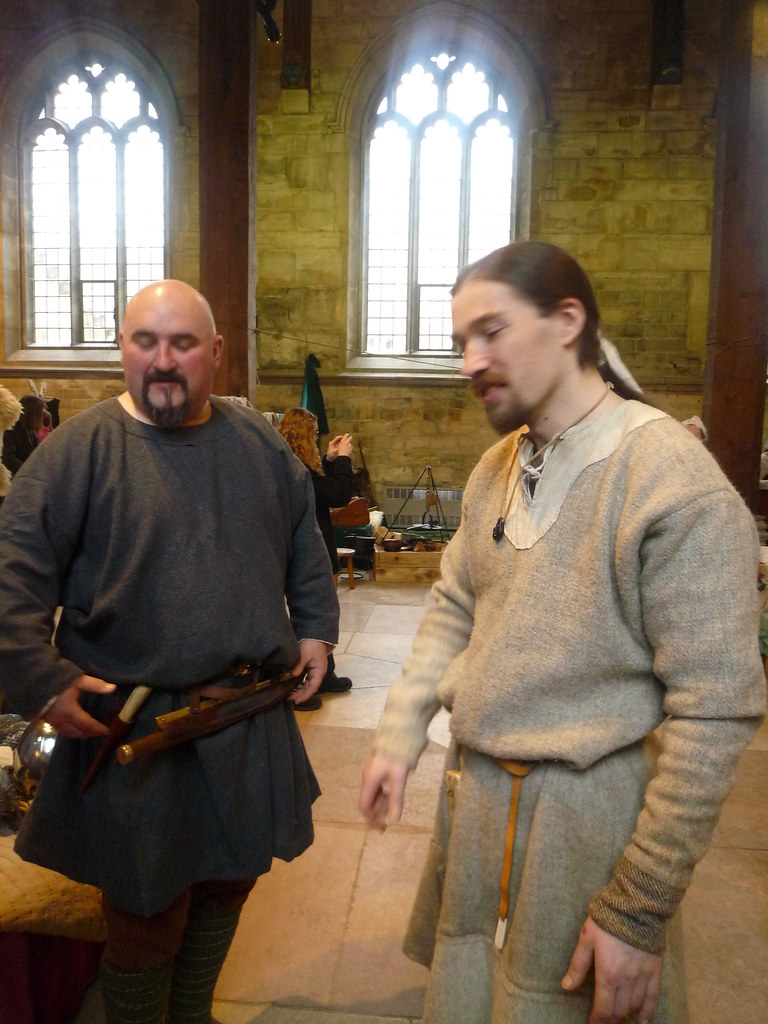
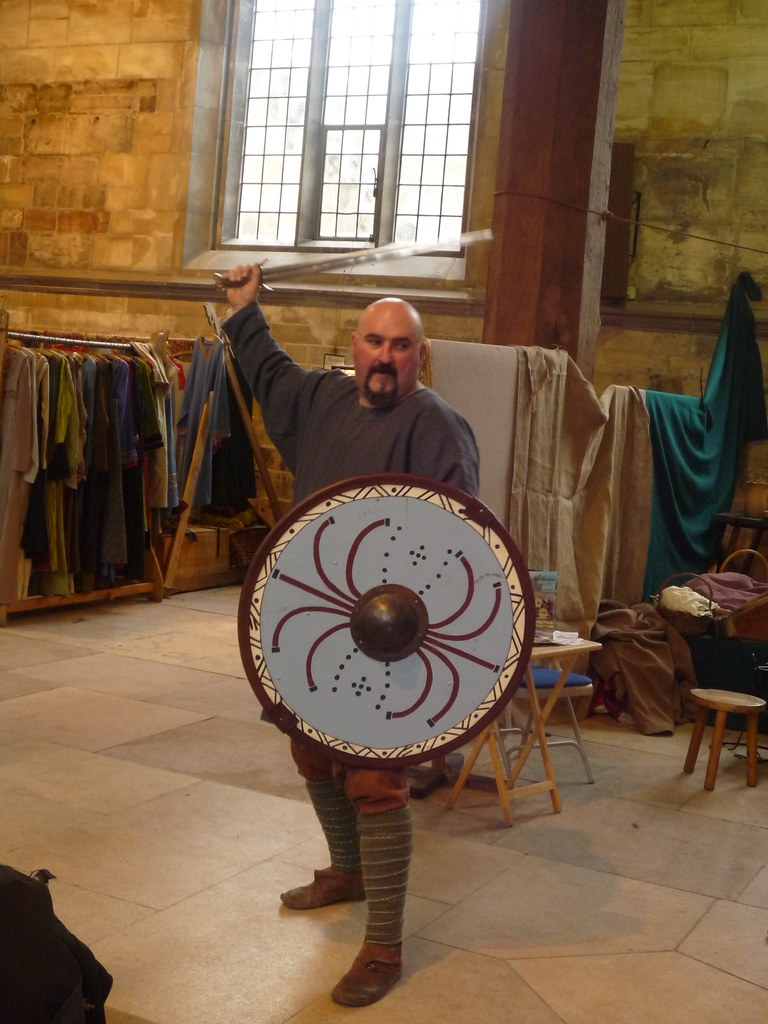
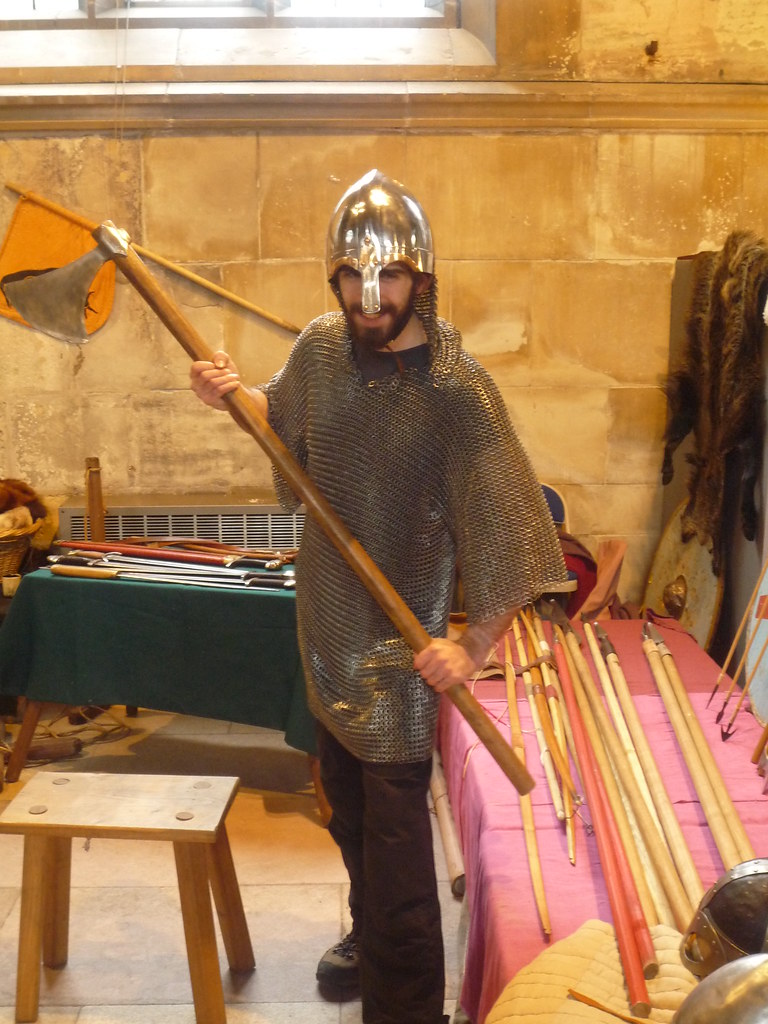
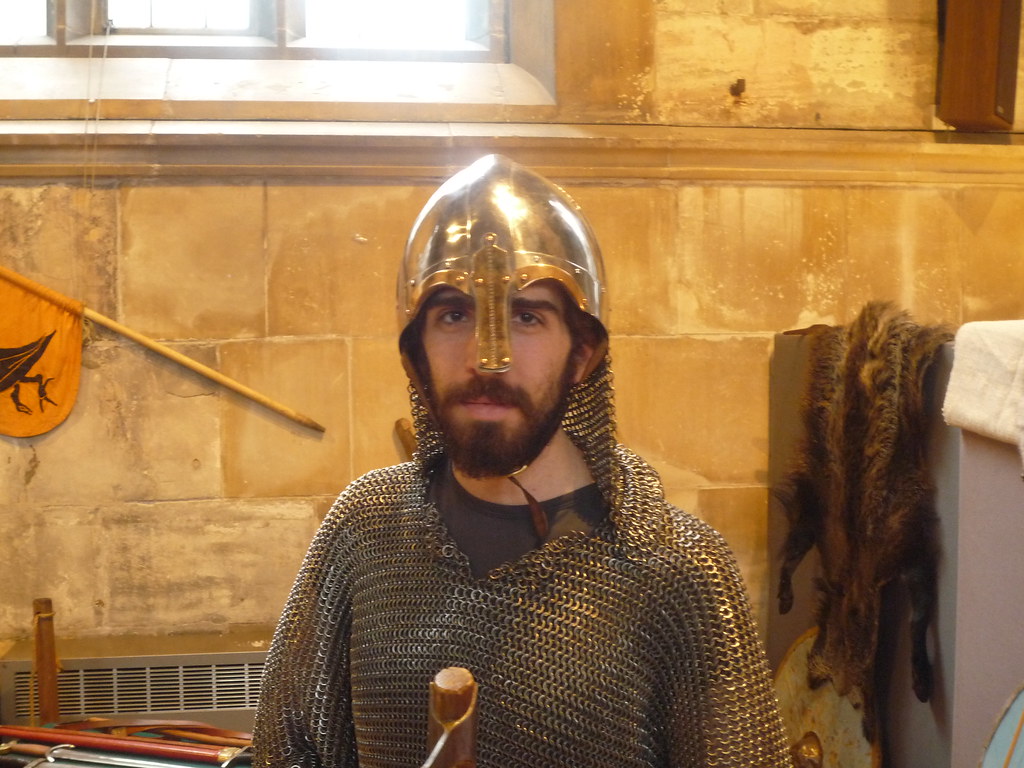
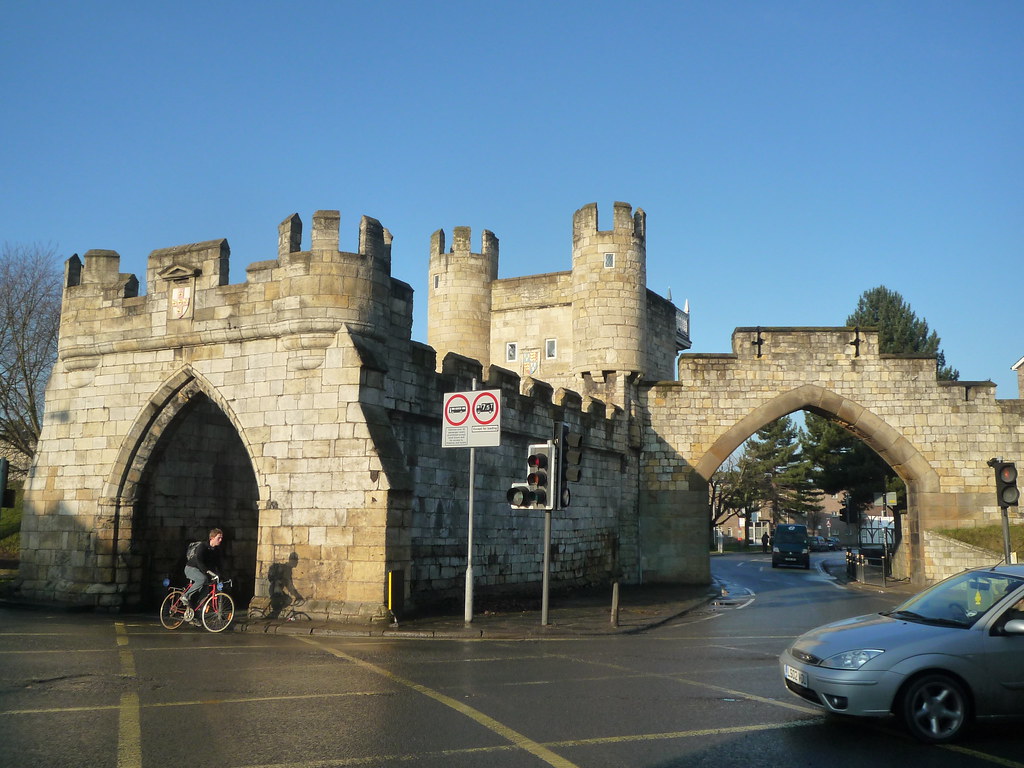
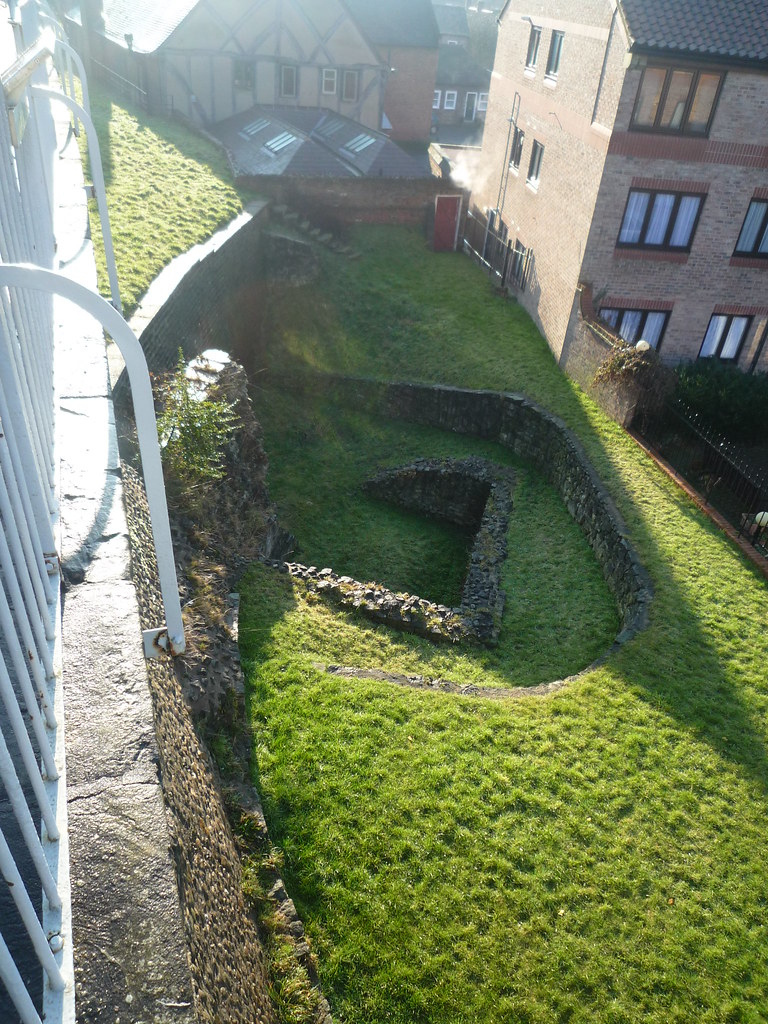
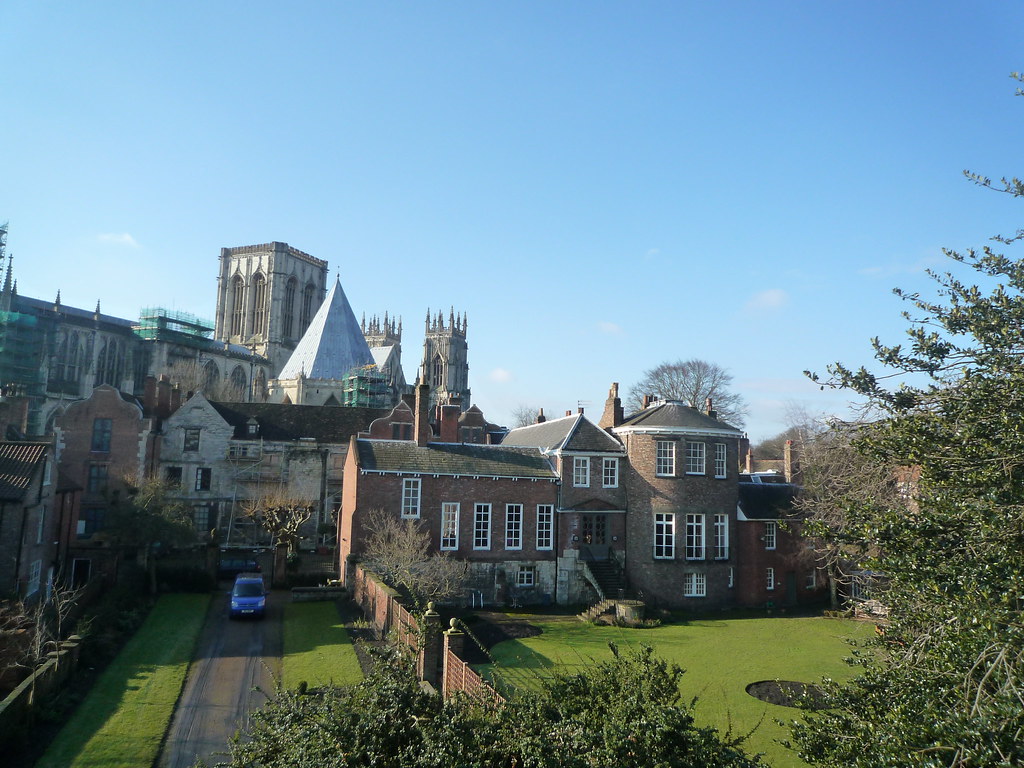
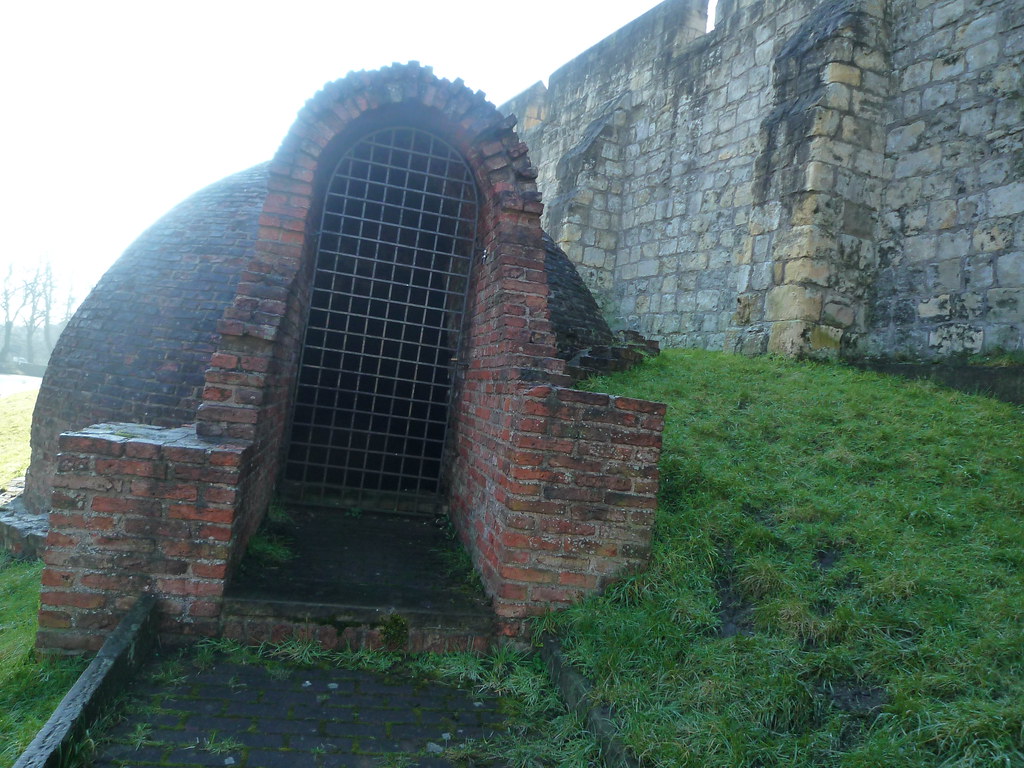
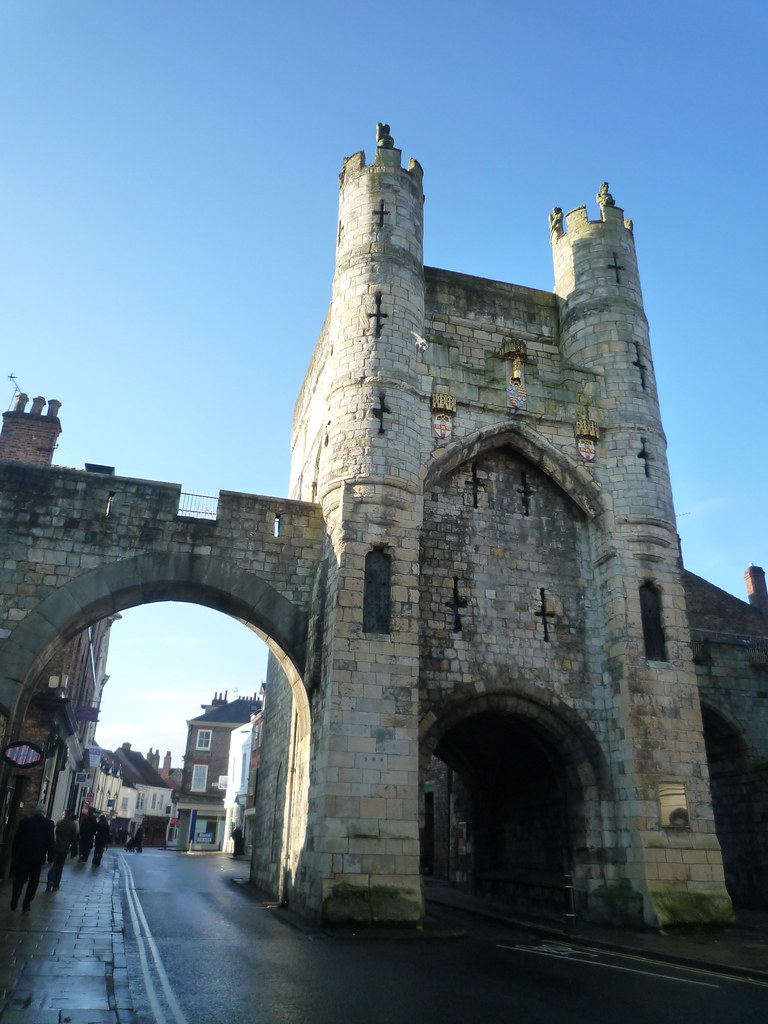
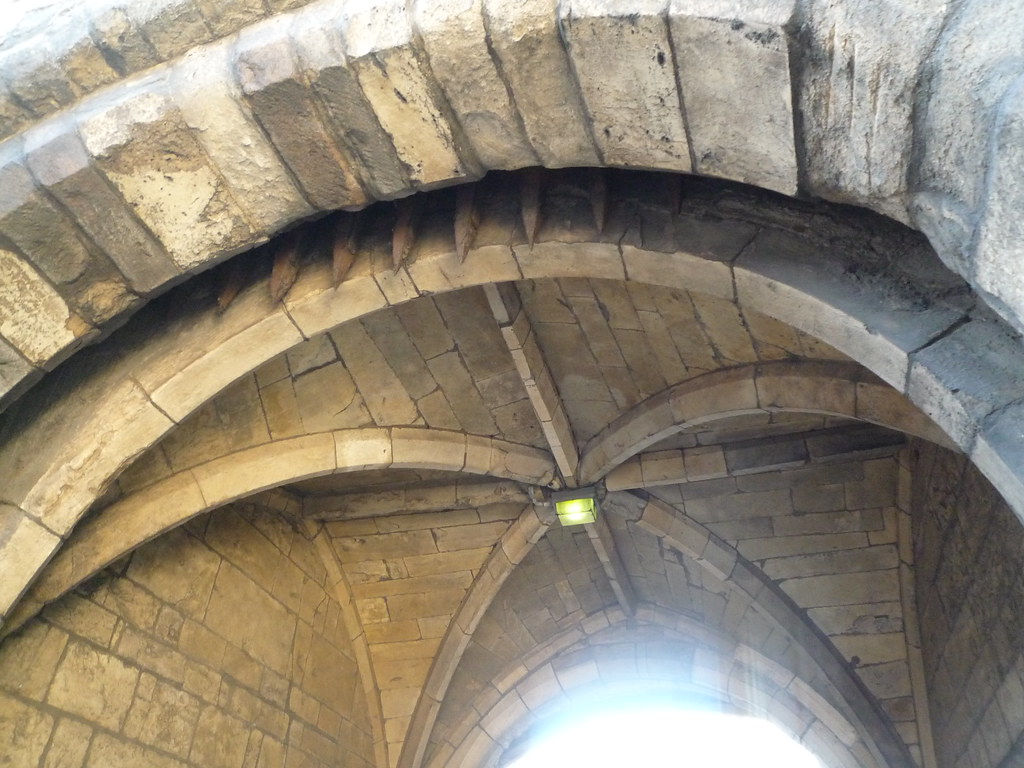
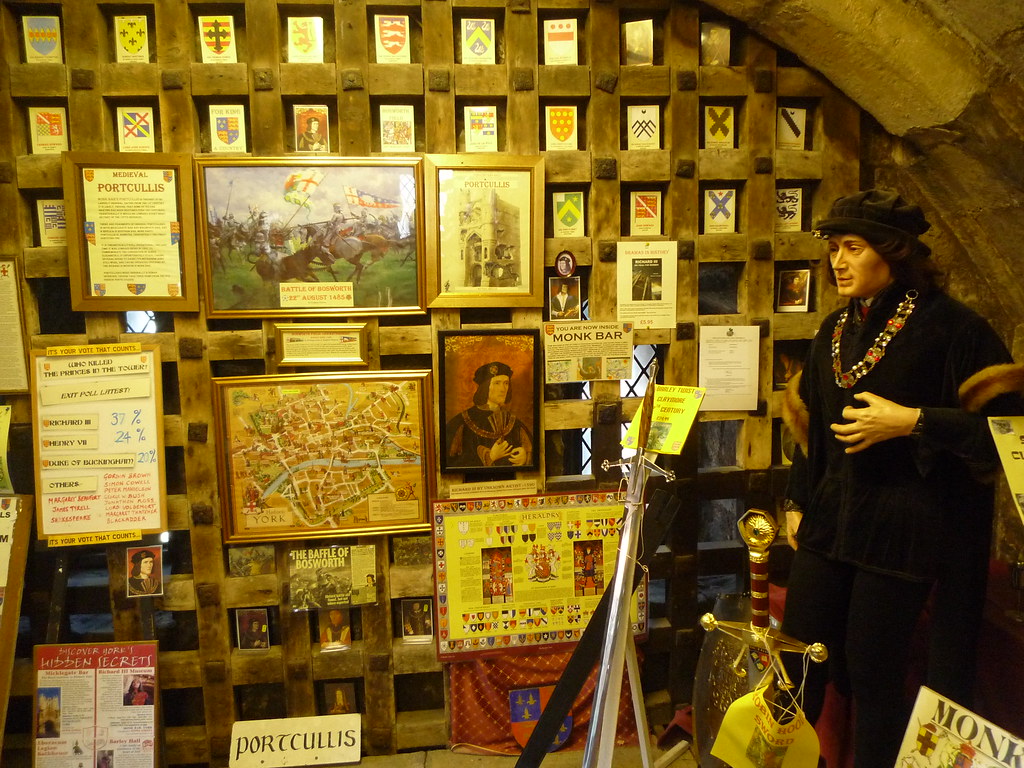
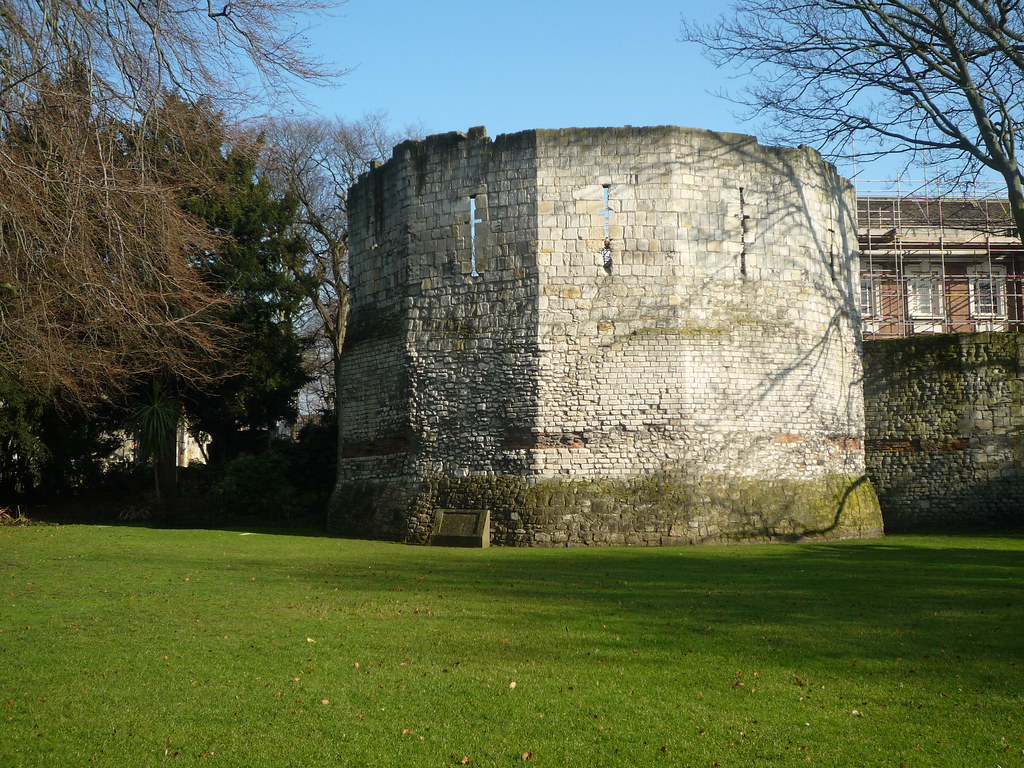
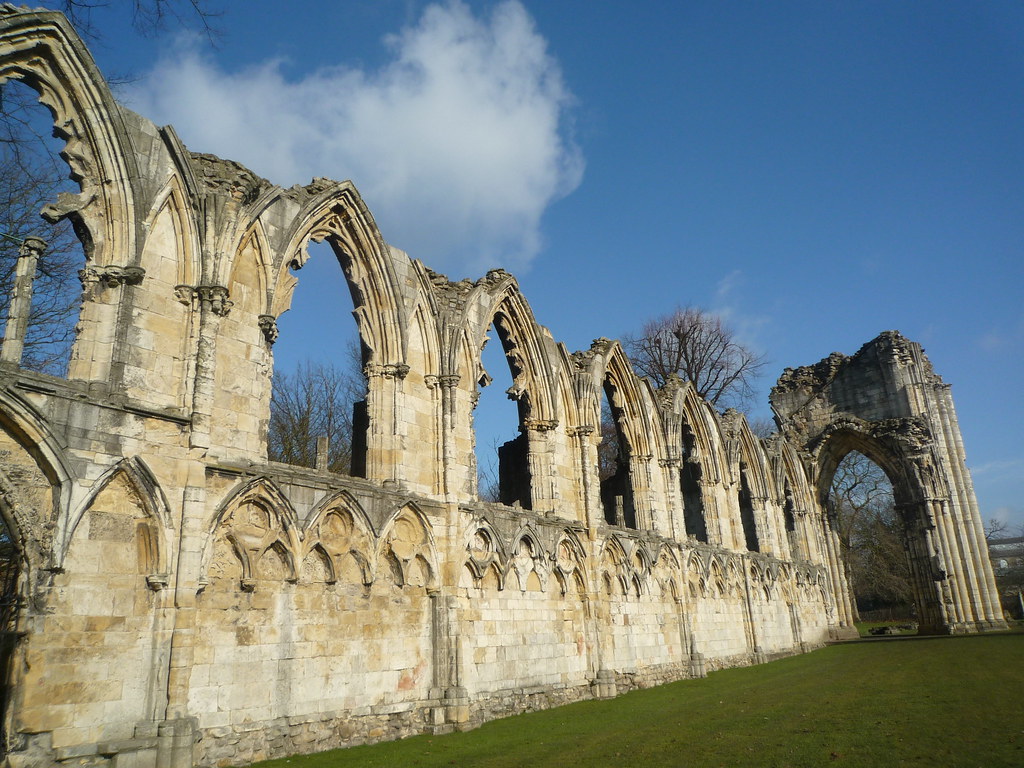

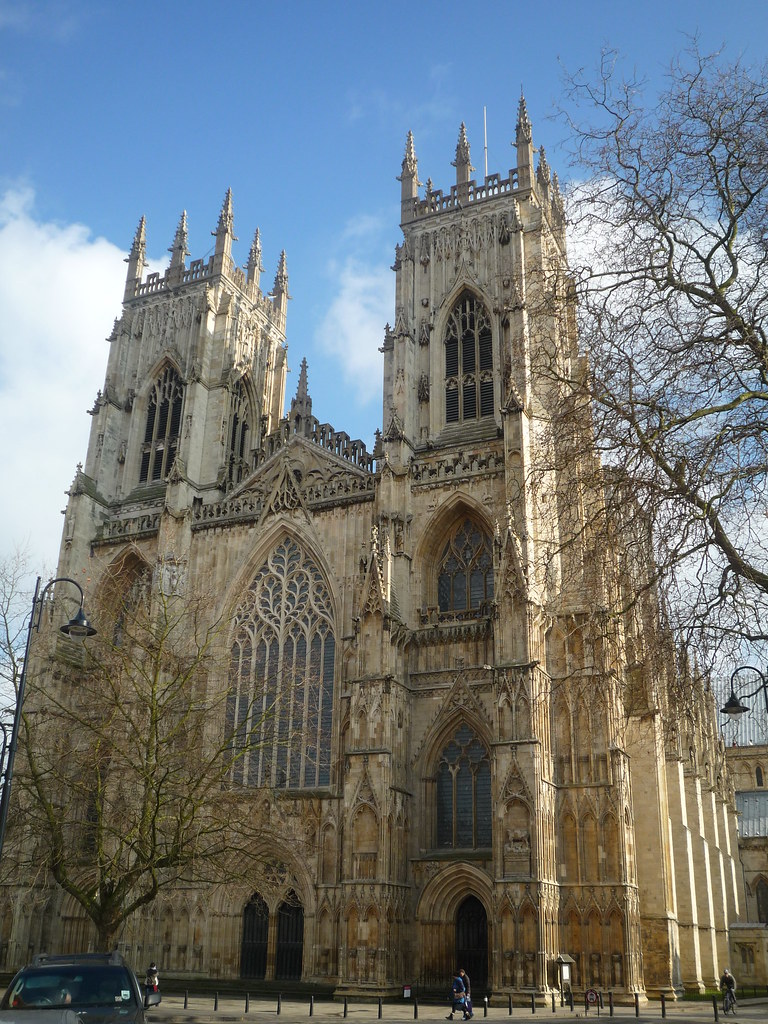
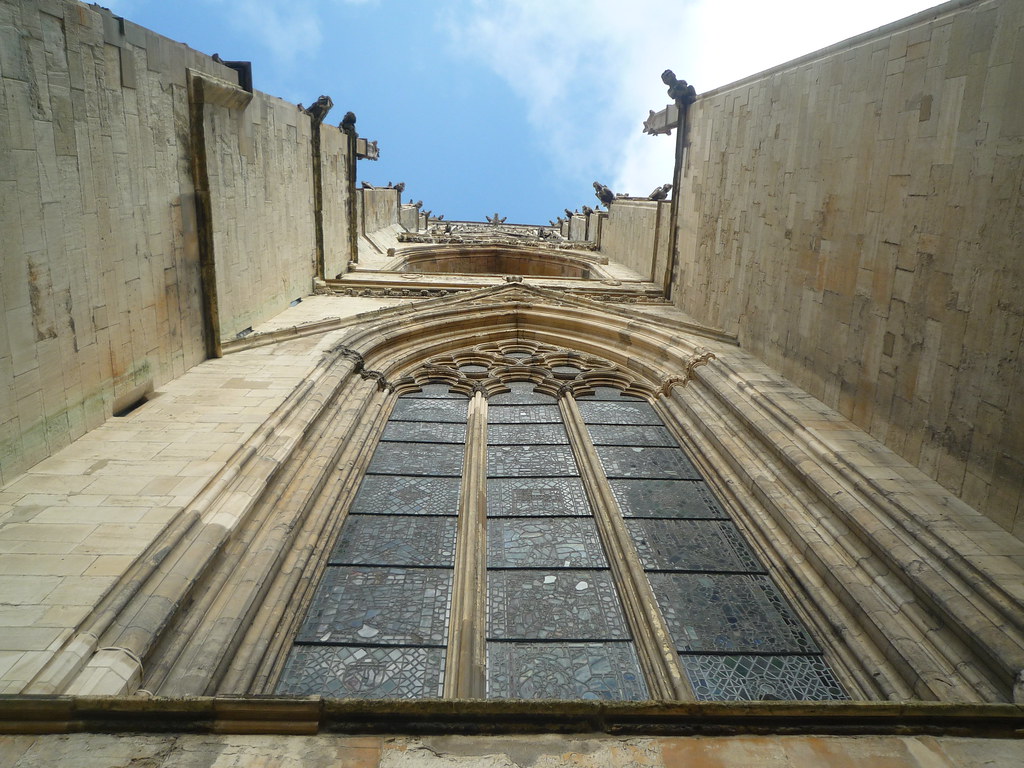

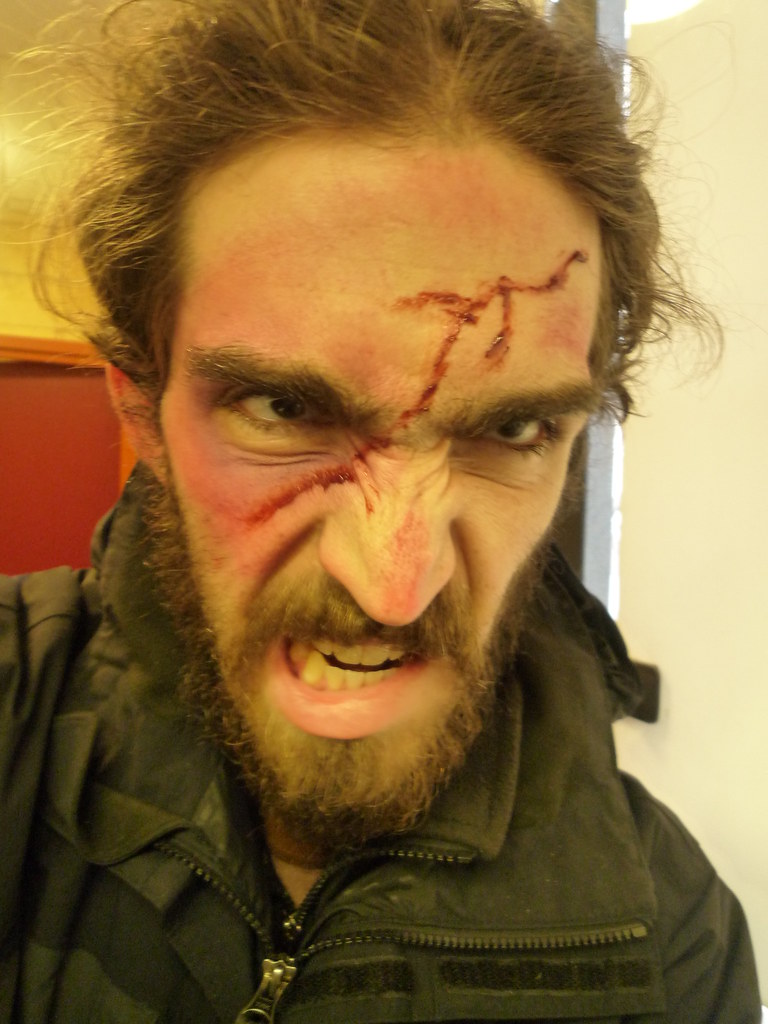

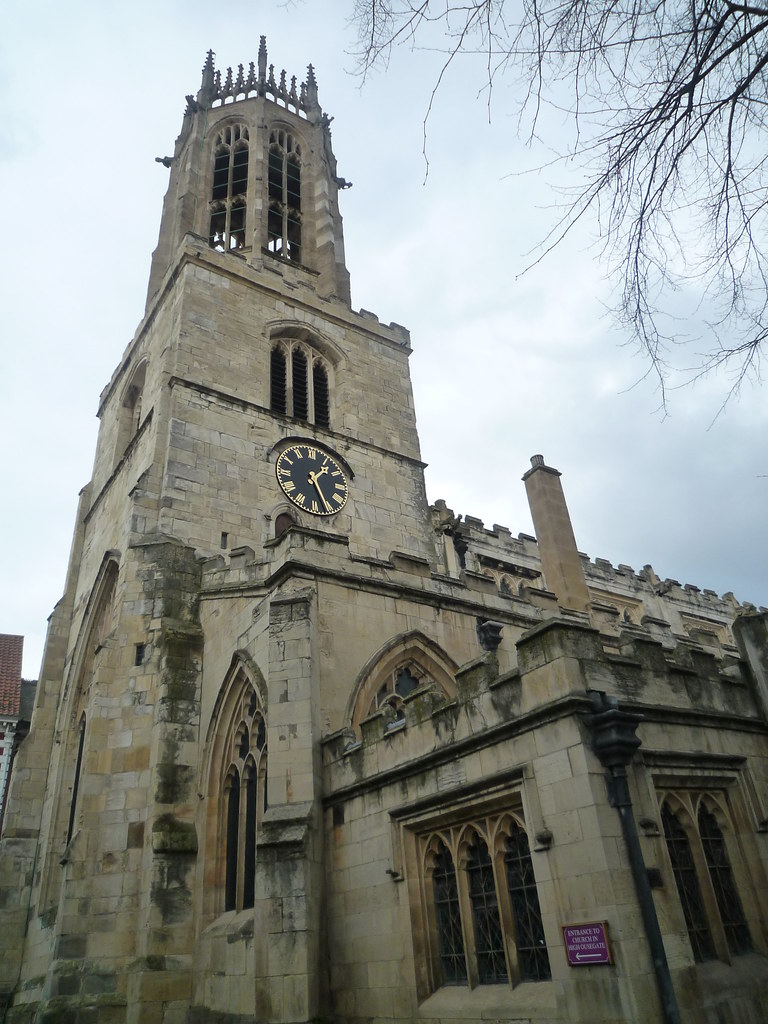
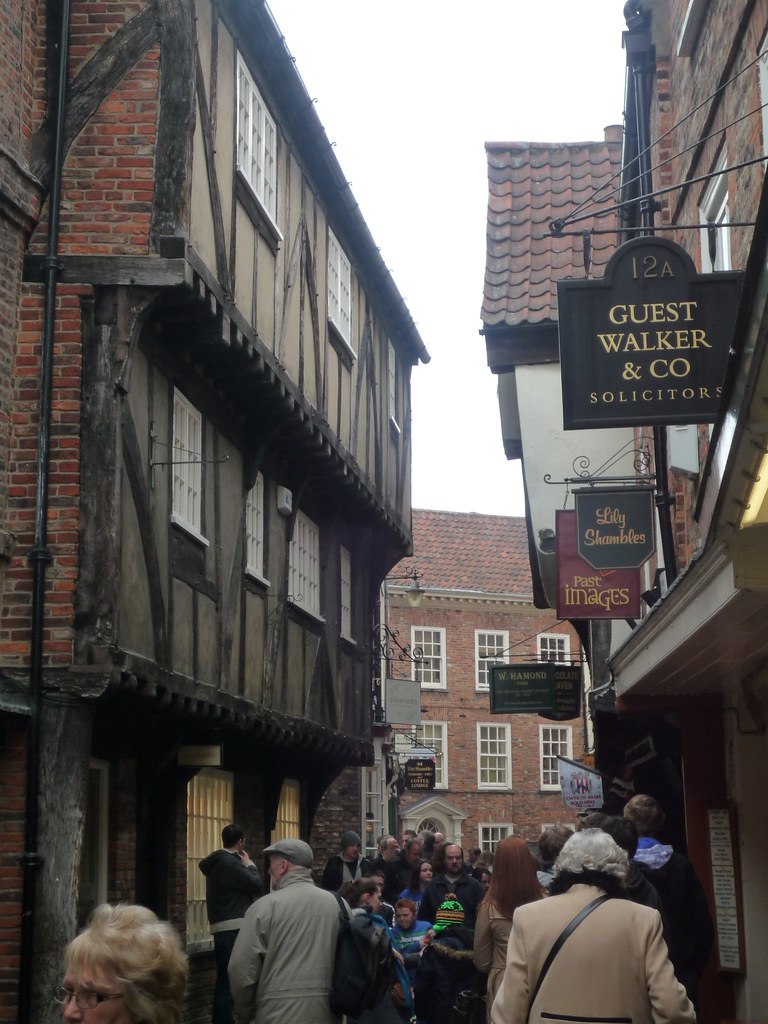
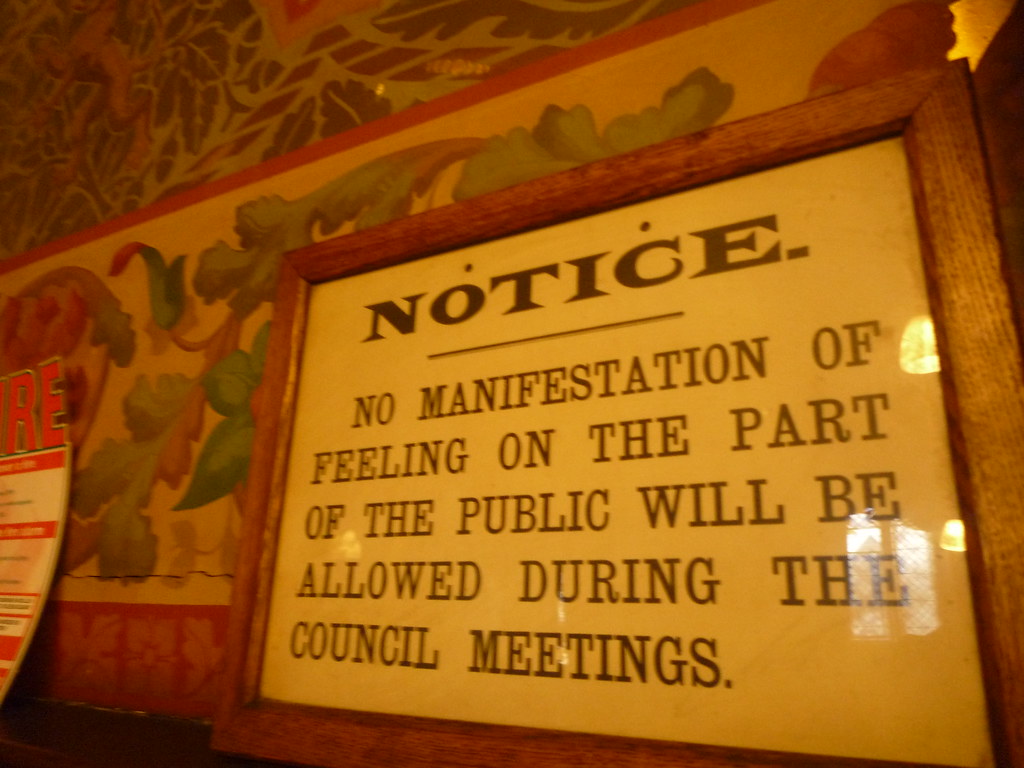
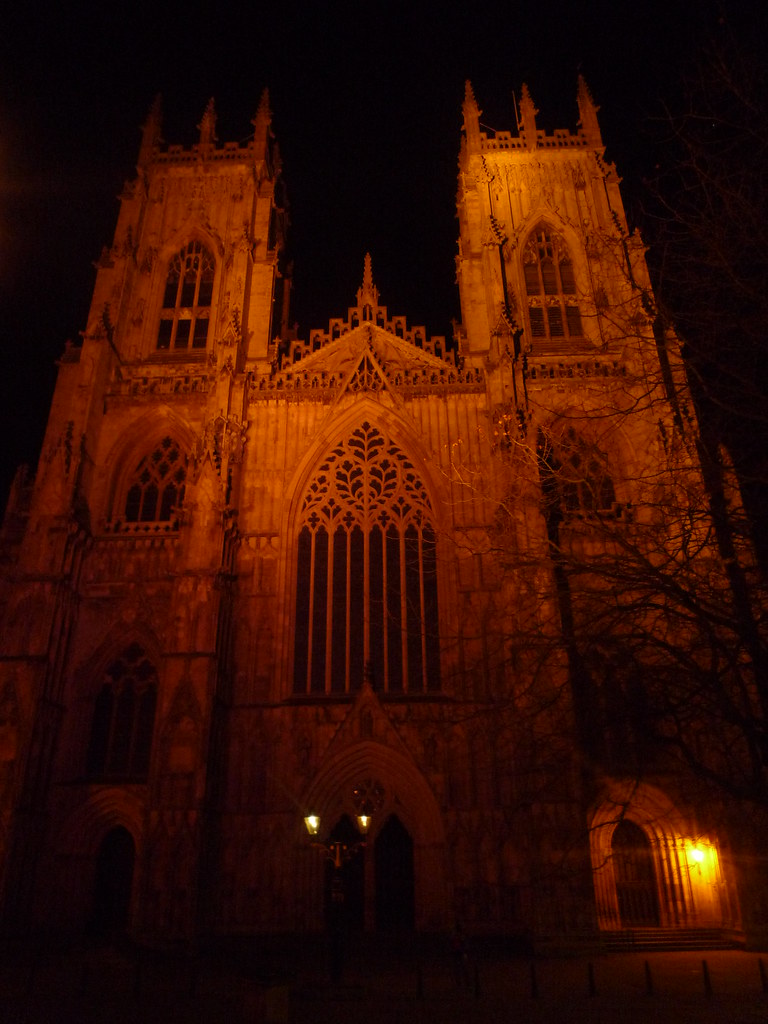
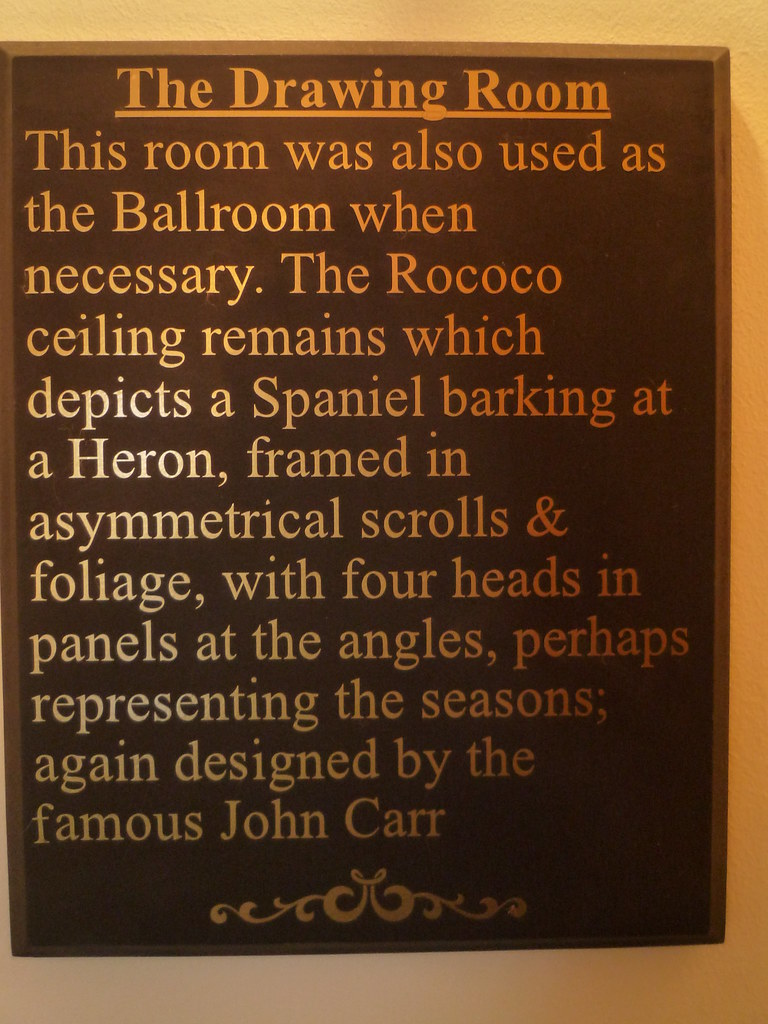
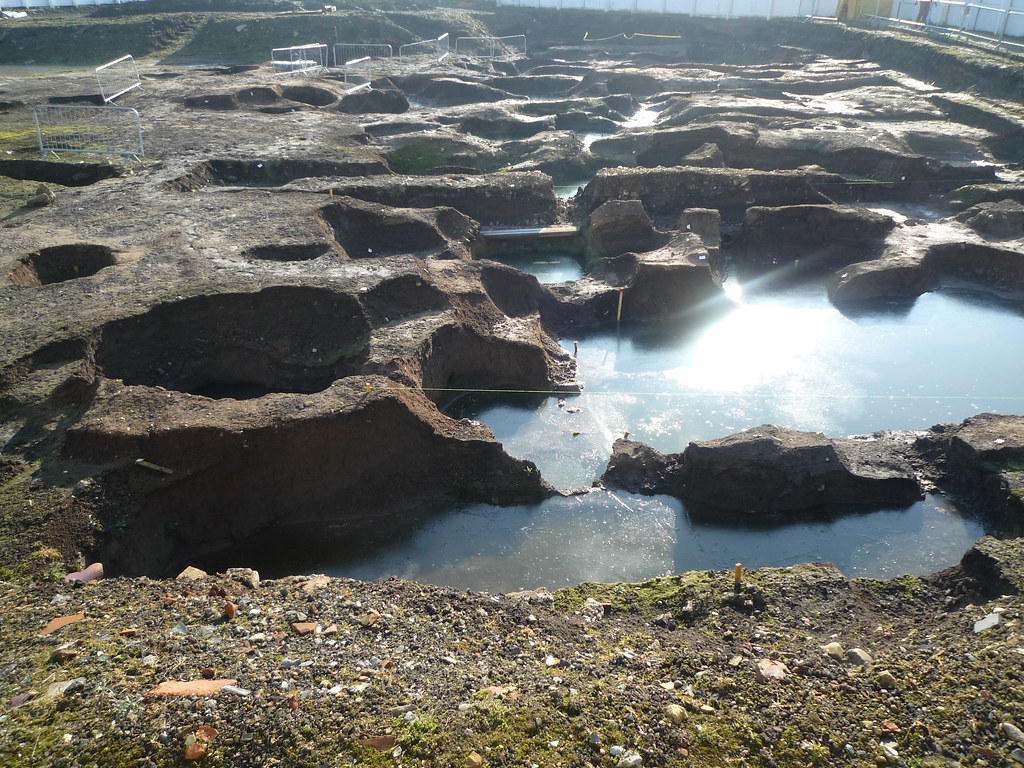
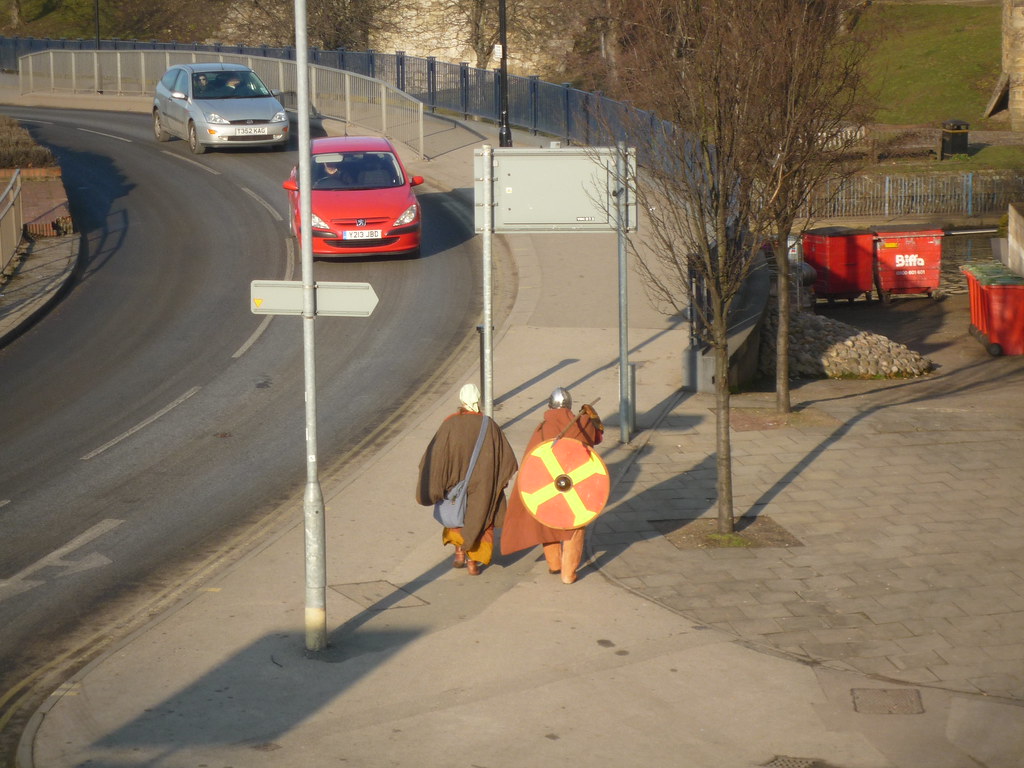
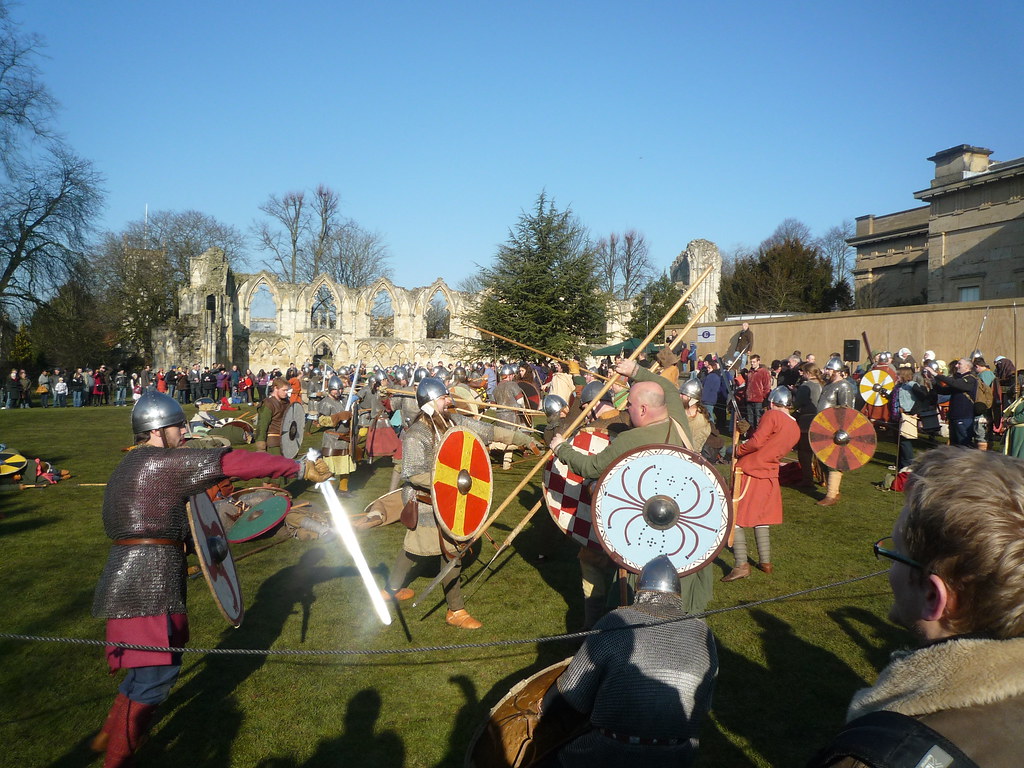
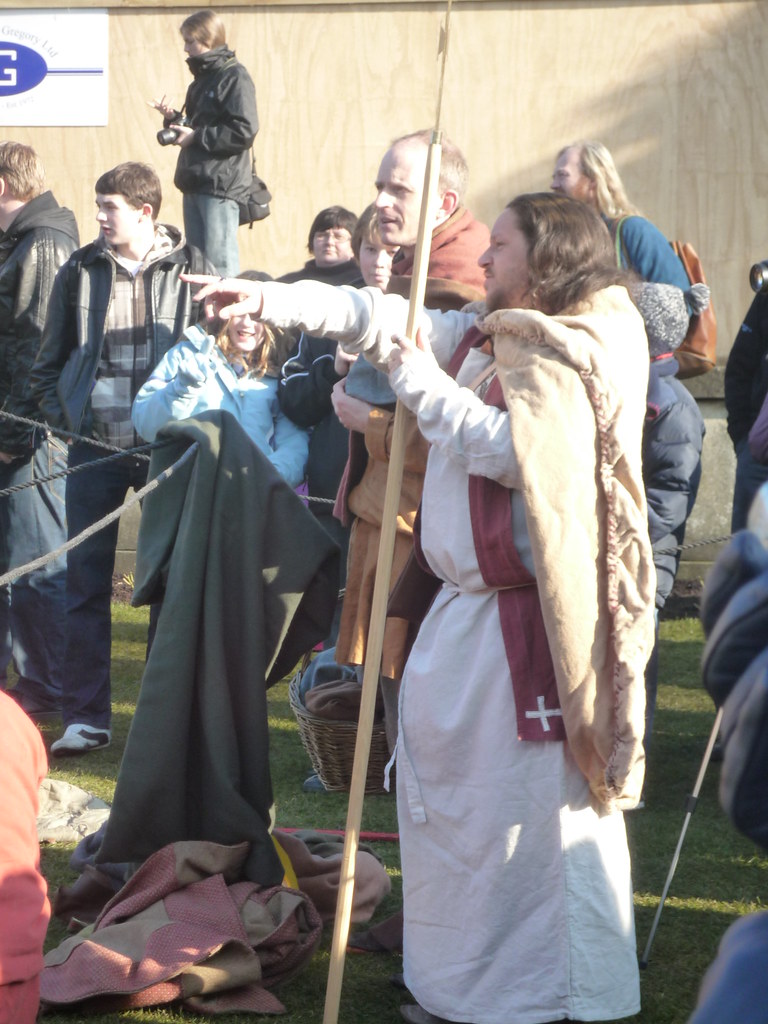
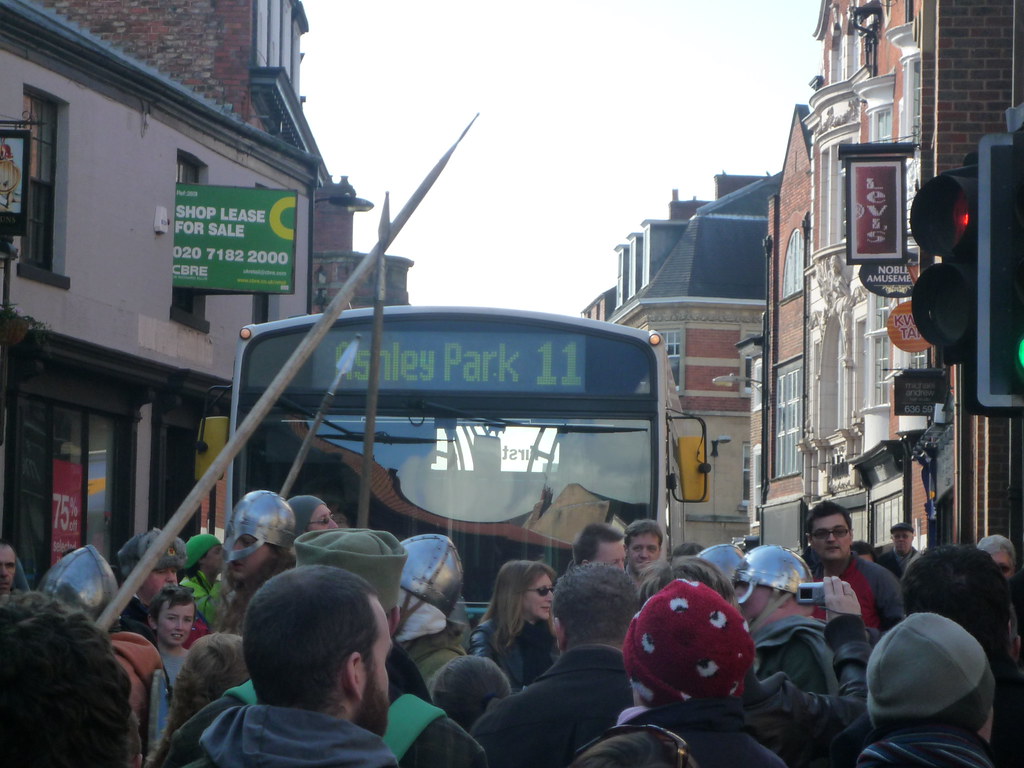

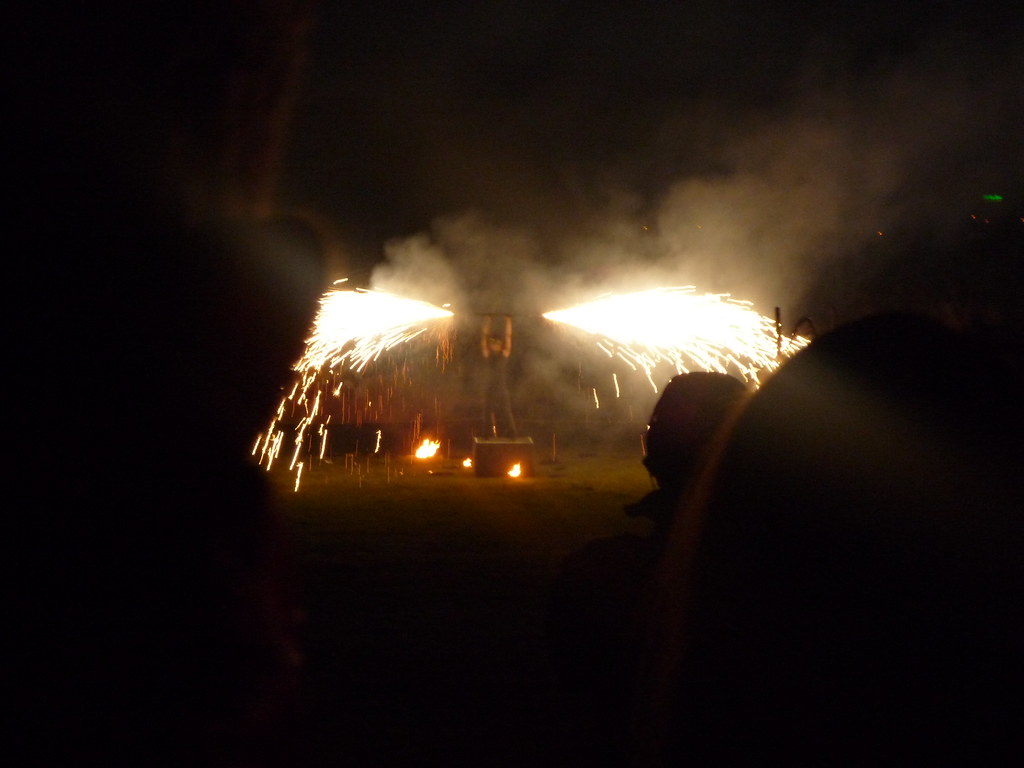
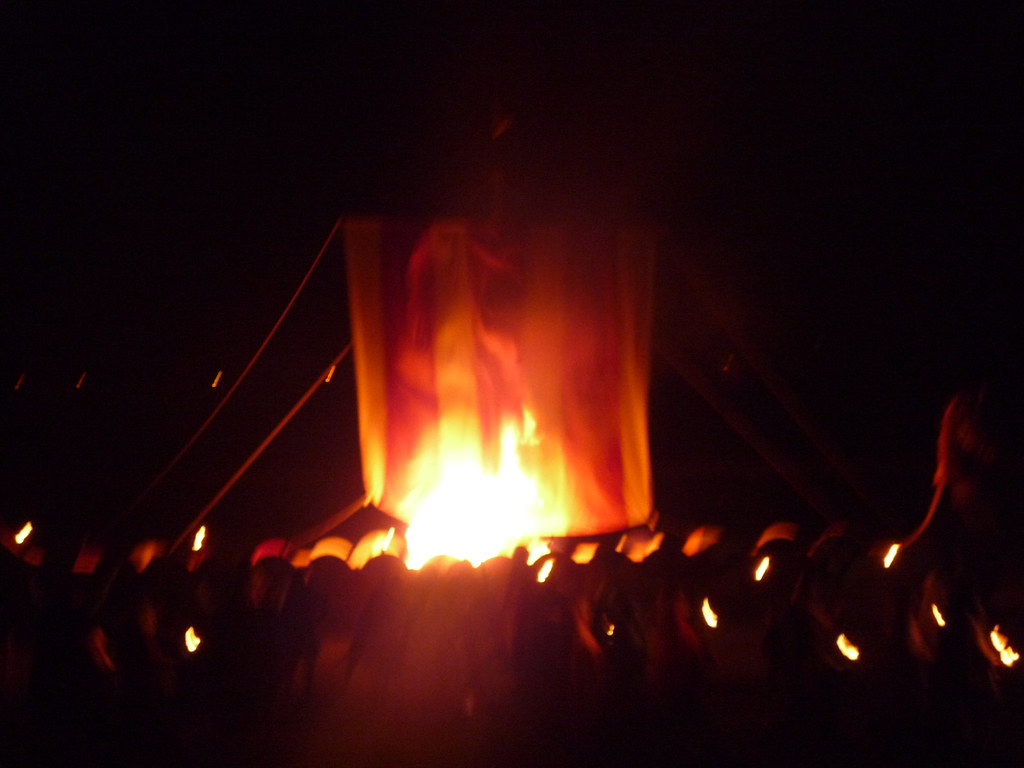
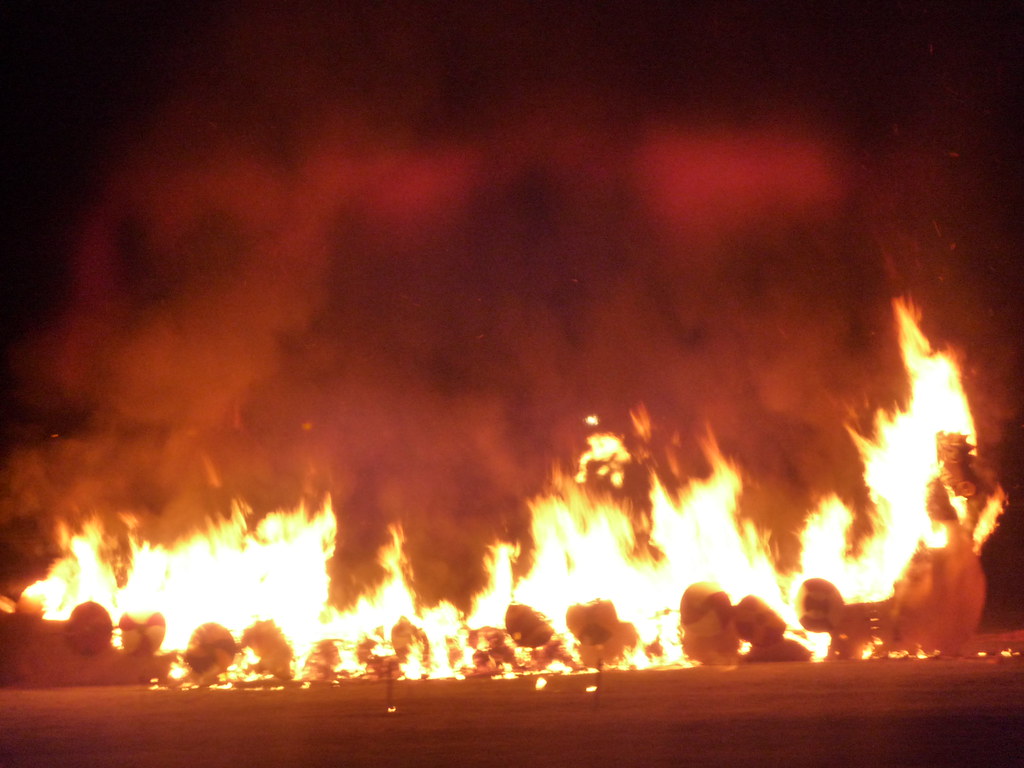

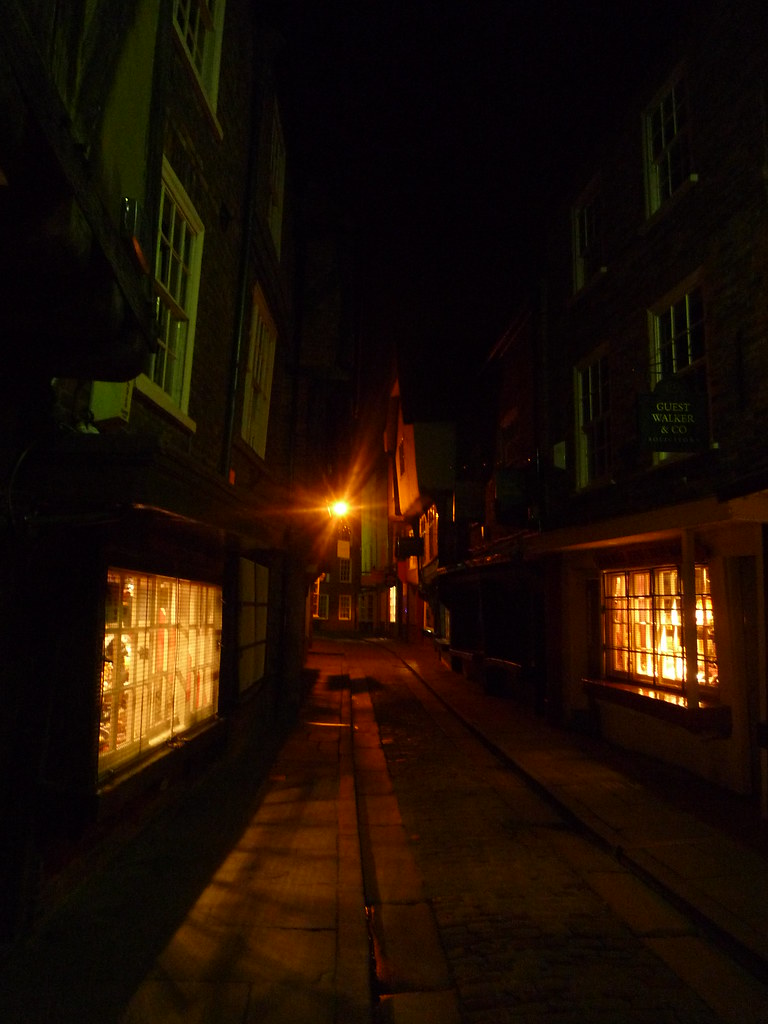
2 comments:
i am pretty impressed that you write with such detail about what you did more than a year ago! i'm pretty sure i couldn't write in detail about what i did last week. i imagine the pictures helped, though.
The pictures are indispensable. I also heavily use my (very beat up and well used) Lonely Planet, look up some stuff, and look back at my (all too scant) notes. Thankfully I took better notes about Cambodia!
Post a Comment